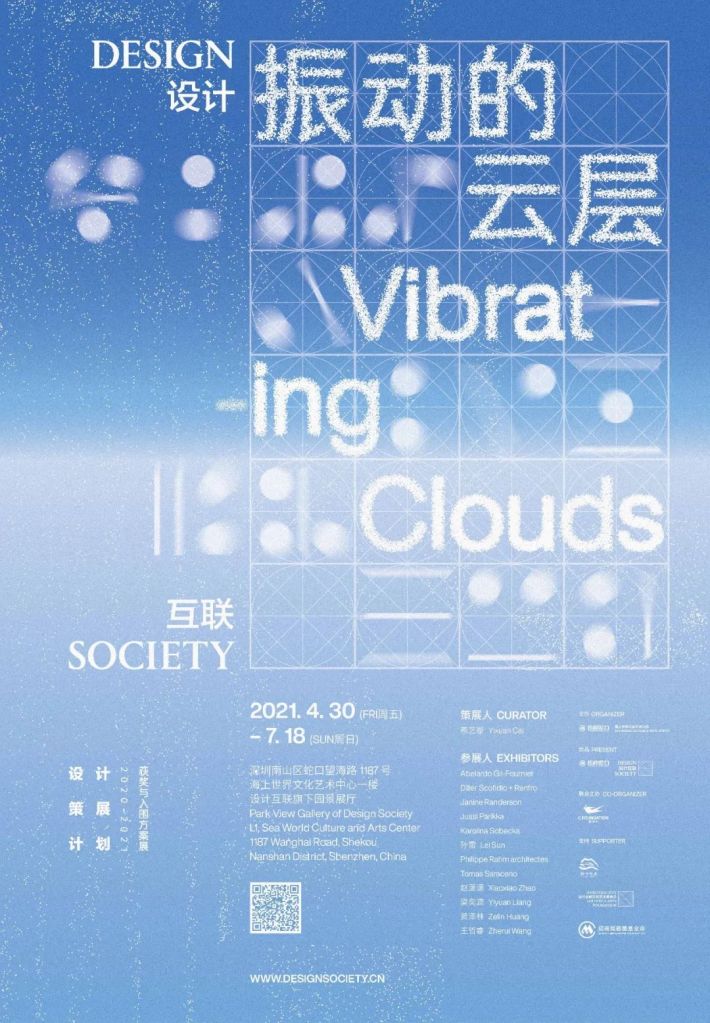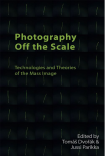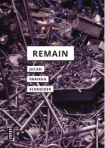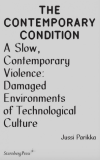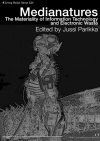Archive
Forthcoming in 2023: Operational Images
First signs of my forthcoming book Operational Images: From the Visual to the Invisual are online. Featured in the University of Minnesota Press new Spring /Summer 2023 catalogue.

An in-depth look into the transformation of visual culture and digital aesthetics
First introduced by the German filmmaker Harun Farocki, the term operational images defines the expanding field of machine vision. In this study, media theorist Jussi Parikka develops Farocki’s initial concept by considering the extent to which operational images have pervaded today’s visual culture, outlining how data technologies continue to develop and disrupt our understanding of images beyond representation.
Charting the ways that operational images have been employed throughout a variety of f ields and historical epochs, Parikka details their many roles as technologies of analysis, capture, measurement, diagramming, laboring, (machine) learning, identification, tracking, and destruction. He demonstrates how, though inextricable from issues of power and control, operational images extend their reach far beyond militaristic and colonial violence and into the realms of artificial intelligence, data, and numerous aspects of art, media, and everyday visual culture.
Serving as an extensive guide to a key concept in contemporary art, design, and media theory, Operational Images explores the implications of machine vision and the limits of human agency. Through a wealth of case studies highlighting the areas where imagery and data intersect, this book gives unprecedented insight into the ever-evolving world of posthuman visuality.
See here for the preface to the book.
The cover image includes a detail from Maria Constanza Ferreira’s video work.
Operational Images – Preface in the forthcoming book
I submitted the manuscript for the book Operational Images (part of our project Operational Images and Visual Culture) to the publisher, University of Minnesota Press. The book is forthcoming in 2023, but for those of you interested in a sneak preview, please find below the Table of Contents and the Preface (without the endnote references though) that starts the book.
Table of Contents
Introduction: Between Light and Data
Preface: Operational Images, All the Way Down
Chapter 1: Operations of Operations
Chapter 2: What is Not an Image? On AI, Data, and Invisuality
Chapter 3: The Measurement-Image: From Photogrammetry to Planetary Surface
Chapter 4: Operational Aesthetic: Cinema for Territorial Management
Chapter 5: The Post-Lenticular City: Light into Data
Chapter 6: A Soft Montage of Operations
Preface: Operational Images All the Way Down
This book focuses on operational images, a concept that first emerged in Harun Farocki’s audiovisual work (films and video installations) and writings. The often-voiced but almost as often insufficiently developed definition is simple, and it is already somewhat evident in the term itself: there are some images that primarily operate; they are not necessarily representational or pictorial. Operational images trouble what an image is, as far as it shifts from representational to non-representational, from the primacy of human perception of bodies, movement, and things to measurement, pattern, analysis, navigation, and more. They change the scales and terms of reference. Such images have an epistemic force, while they also are involved in an intervention in the world, whether directly or indirectly. These sorts of images fix epistemic details, but while they hold them in place, they also are mobile in ways that become an essential part of their institutional activity. These points are explored in the pages that follow.
Operational images appear most often in discussions of machine vision and automation of perception, where images are part of a broader system of analysis, identification, tracking, and destruction. The term operational image seemed to speak directly to the period from, roughly, the first Gulf War in 1990 to the current phase of military and security management of territories with drones as part of an ecology of observation, analysis, and surveillance. Even a brief survey of Farocki’s films and existing literature reveals these thirty years of militarized airspace and technological systems that incorporated much of the already existing logic of targeting would be a straightforward implication of the term. However, this is not to say that this book is primarily about war or airspace, or surveillance or drones–even if such are central parts of the theme that admittedly ranges much further in the past than just the context of smart weapons and machine-readability of landscapes, territories, and objects (including people). It was also not the sole interest in Farocki’s work, especially if we consider how, for him, operational images emerged in architectural modeling, traffic control systems, construction of affective environments such as malls, and other examples that have also paved the way toward current topics of AI culture. Furthermore, this book is also not merely about a particular class of images that emerge in high-tech contexts, even if, again admittedly, it is about visual culture and its transformation into invisual data culture. We are not seeking an aesthetics or politics of digital images. There are plenty of books on these topics already, and many of them are consulted and discussed in this one, too. Thus, there is no need to write yet another take on digital visuality or digital images, or perhaps even about visual culture.
This book is about a needed shift in emphasis to the operational image. From a discussion of the image, its particular formats, and even its functions, we move to a different, albeit closely related question that concerns operations, a key term that ties to infrastructures, logistics, and all manner of actions that function to sustain, mobilize, analyze, and synthesize the thing we have grown to call “images”. I am after the coupling of perception and action, of images that control, regulate, and amplify how bodies operate.[1]
Both perception and action are terms defined in the course of this book: perception is not tied to any natural experience, optical capacity, or even a technique, and the action in question is not necessarily only the here and now of a human body but defined by more tricky causalities–including a relation to the temporality of futures, future-pasts, recursions, and more. In other words, operations do not act only on the present but across a broader timescale, including a temporalization of space (e.g., in forecasting systems).
Allow me to offer a guiding rhetorical figure that should be considered throughout this book as part of its conceptual scaffolding.[2] Operationalism is already an established term in scientific methodological literature[3], but also consider the rather famous and often overused parable of the turtle at the base of the universe. The narrative comes and goes in different forms, this one written down in Carl Sagan’s Broca’s Brain:
“Some ancient Asian cosmological views are close to the idea of an infinite regression of causes, as exemplified in the following apocryphal story: A Western traveler encountering an Oriental philosopher asks him to describe the nature of the world: “It is a great ball resting on the flat back of the world turtle.” “Ah yes, but what does the world turtle stand on?” “On the back of a still larger turtle.” “Yes, but what does he stand on?” “A very perceptive question. But it’s no use, mister; it’s turtles all the way down.”[4]“
Instead of turtles, the history of photography, technical images, and visual media could be told in the same key: instruments built upon instruments, upon infrastructures, upon practices, upon techniques, upon further instruments and infrastructures, and so on. Operations built on operations that include elements that are material and semiotic, forms of knowing, and forms of mattering. As Geoffrey Winthrop-Young points out, such turtled ontology is also shared by the cultural techniques approach in media theory, concerned with “operational sequences involving actors, things and practices that, coming together, give rise to established cultural practices.”[5] Could the same then be said about the operational sequences involving images? That there is a fundamental relational ontology at play, one that could be described by way of scaffolding operations? At the very least, we can confidently concur with Michelle Henning when she writes that “[t]he Victorian idea of the photograph as an image that makes itself no longer holds sway.”[6] This applies to the specific fantasy of unmediated images drawn by sunlight and practices of sensing and registering signals as images and diagrams.
Joseph von Fraunhofer’s 1810s invention of the spectrometer–a later backbone of remote sensing and the analysis of materials through their spectral fingerprint–represents but one case from the alternative history of visual technologies. To verify and measure the dark lines existing in the solar spectrum–later named Fraunhofer lines–the spectrometer apparatus was an assemblage of multiple elements, camera-like technologies (six lamps and a shutter), a prism, and a modified theodolite: “an ordnance surveying instrument originally designed to measure angles for the production of maps.”[7] As Susan Schuppli writes: “His work would eventually come to be used by scientists to determine the chemical composition of a remote object–our sun, some 149.6 million kilometers away–not through direct testing but by treating it as an image, one whose chromatic variance could be translated into the complex language of chemistry.”[8] Treating the world as an image beyond its pictorial qualities is one key site where operations of epistemic value take place–but there are multiple operations already in place that produce such images. Fraunhofer’s laboratory set-up can be described as an essential part of the history of science of discovery of the qualities of the solar spectrum, but as an artificial set-up of said spectrum, it is also a microcosmos of light–even of interplanetary light. It is a simulation of the behavior of solar light, too, which then introduces the possibility of using this standardized view of the dark lines on the continuity of the spectrum to scale up and down across light and materials. All sorts of material instruments and scalar operations are piled upon each other, explicated and implied.
As photography (and yet not entirely just photography), Fraunhofer’s apparatus was a camera of sorts–one built like turtles on top of each other. I would go so far as to say that Fraunhofer’s apparatus represents one central instance of the history of operational imaging vis a vis remote sensing[9] and that what was captured was not a picture in the traditional sense but a microcosmos (or a condensation of its visual characteristics) through a detailed concrete arrangement that facilitated this diagram of the abstraction to emerge, and it demanded a precise need for accuracy in the placement of angles and distances, a measurement-operation in its own right.[10]
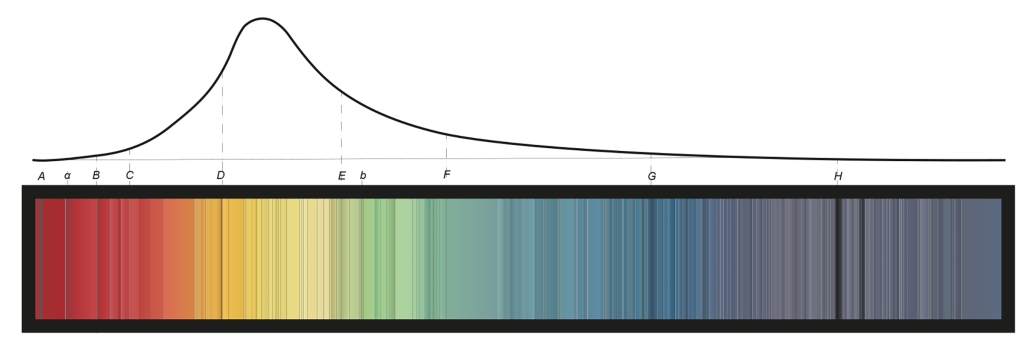
The recursive world of turtles and their relations–or camera-like instruments in laboratories and solar light–is a helpful figure of thought. At the same time, a more conceptual reference point for such operative chains of support is likely to be found in the theoretical work of cultural techniques and operative ontologies. But more on that later.
To answer the question that likely has emerged, what is this book about? It is not about turtles, but operations all the way down: images that exist only because of other operations–and the operations that help us to understand the transformation of images from visual to data. One could justifiably argue this point about cinema already, as Thomas Elsaesser speculates about Farocki’s interest in simulations as not a replacement of reality but a chain of synthesis–“the downward spiral of simulation of a simulation of a simulation”[11]–that pertains to cinema and post-cinema. In our case, we instead place emphasis on the operational transformation of the link between visuality, photography, spectral analysis, and data–a transformation that did not happen with digital culture, but circa 1900, as the story that follows will show you.

Hydromancy by Matterlurgy
Hydromancy by Matterlurgy is a new film and installation on at the John Hansard Gallery (JHG). It is a commission by the JHG and Onassis Stegi (Athens) as part of our on-going Weather Engines project that I am curating with Daphne Dragona.
You can see it on the large digital screens at the Hansard in Southampton (and next year installed in Athens) but also online:
https://jhg.art/video/matterlurgy-hydromancy/
Hydromancy is “filmed on location at the University of Southampton’s National Oceanography Centre, a globally renowned centre for developing technologies that investigate the world’s oceans, earth systems and biosphere, Hydromancy blends documentary with artistic intervention, considering the ocean as both a sensory environment and scientific object. As viewers, we visit a coral lab bathed in blue light, an engineering workshop, and enter a room bubbling with algae and phytoplankton.”

An ecoaesthetic of vegetal surfaces
“An ecoaesthetic of vegetal surfaces: on Seed, Image, Ground as soft montage” is the title of the new article we just published in the Journal of Visual Art Practice with Abelardo Gil-Fournier. It draws on the video essay published last year and engages especially with the practice-led methodology. The video was just recently installed in the Vibrating Clouds exhibition in Shenzen and will be part of at least two exhibitions in later 2021/2022 (in Europe). With Abelardo, we are currently writing a book on vegetal images and the question of multi-scalar planetary surfaces.
Below a short excerpt of the article’s Introduction section
—
This essay builds on our recent Seed, Image, Ground video project (2020) and how it entangles with our larger research project on surfaces. Both address the surface of plants, agriculture and the biosphere in relation to the surfaces of media, such as screens and images. The video essay was commissioned by the Fotomuseum Winterthur in 2020 and it is openly available at the institution’s YouTube channel. While the video is a central reference point for this visual essay, our aim is not so much to theorise our own moving images and their juxtapositions and rhythms. Instead, in this article, we present a series of surfaces and scales that appear in and through the images. Images build upon images and this constitutes the practice-led approach to the temporal unfolding in the video. The video works as a temporal articulation of image surfaces across and upon living surfaces. In other words, we articulate the moving images as practices of surfaces, plants, and images: hence the central motif of the video essay and this accompanying text is to ask ‘what do images of growth look like?’ How do such images operate in two channel video practice that builds on Harun Farocki’s work? Here, we do not refer only to operational images (Farocki 2004), but also to the idea of a ‘soft montage’ (Farocki 2009) which becomes a methodological reference point as one aspect of practice of images about and across images that can also be conceptualised as we do in this essay. The video and its relation to text are ecoaesthetic (Cubitt 2017) in the sense of dealing with the entanglement of media and environmental materials where the double articulation of images and green plant surfaces are the engine of our argument.
In this way, the video is a methodological exercise that helps to articulate a problem space (Lury 2021) – a space where problems, methods, and concepts are dynamically rearticulated, and where the space of their composition is not a stable container where a thing is addressed but part of their making: ‘a problem is not given but emerges with-in and out-with a myriad sequence of actions or methods that (trans)forms the problem space’ (Lury 2021, 6). This composition and this montage points to the ways methods are enacted only in the material practices that constitute the problem space as it unfolds as a living issue and tissue. Can this sequence Lury refers to be also a sequence of images? Could the actions be those of images? As the following visualisation of the evolution of the timeline of our video essay show, the video’s timeline as a problem space presents its fabrication as a surface. The cuts, the movements of the sequences, and other editing operations manifested in the figure, call for a dynamic understanding of surface as surfacing, built on multiple genealogies of instrumentation, technology, and cultivation.
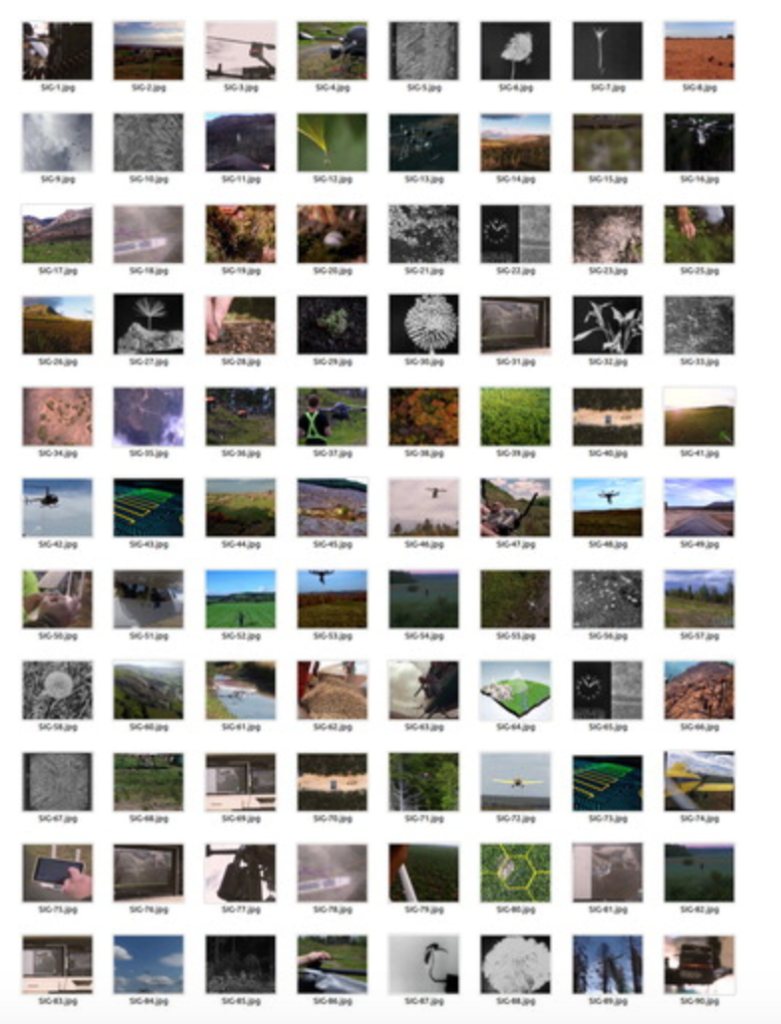
Photography Off the Scale is out
Our book Photography Off the Scale is out and available! Edited by myself and my FAMU colleague Tomáš Dvořák it offers an interdisciplinary perspective on the scale and quantity of images in contemporary visual culture. From the mass-image to post-photography, AI to online visual culture, planetary diagrams to LIDAR, the breadth of topics is wide. The book emerges from our Operational Images and Visual Culture project (FAMU, Prague – and funded by the Czech Science Foundation, 2019-2023).

Here are the really nice blurbs from Lev Manovich, Lisa Parks, and Peter Szendy:
“Among the many fundamental changes taking place in contemporary photography and media culture, probably the most important are changes in scale. The new magnitude of image production, the instant global dissemination of billions of new images, and the adoption of AI that turns these images into big data are only some examples of how the visual has been “scaled up” in the 21st century. Now we finally have a first book that rethinks the history and theory of photography through the lens of scale – and connects this concept to a range of others including measure, politics, gender, subjectivity, and aesthetics.”
– Lev Manovich, Presidential Professor, The Graduate Center, City University of New York
“Someone takes a picture somewhere in the world. Such a trivial action is multiplied by a trillion. Or much more, since the majority of pictures today are produced by machines for machines. This collection of essays brilliantly explores the unheard-of effects of scale on the ontology of photography and it touches upon the sublime of the infinity of digital images.”
– Peter Szendy, Brown University
“This book’s refreshing and much needed take on photography cuts through the infoglut and explores the apparatus, infrastructure, and operations of contemporary pictures. Addressing everything from snapshots to machine vision, Photography Off the Scale unfurls a vital field of technology, politics and aesthetics reshaping the world.”
– Lisa Parks, Distinguished Professor of Film & Media Studies, University of California-Santa Barbara
With Tomáš, we wrote a substantial introduction outlining the stakes of the approach – how it relates to scholarship in photography and links it to key questions of digital culture – and we are really pleased with the whole lineup of the book:
Introduction: On the Scale, Quantity and Measure of Images
Jussi Parikka & Tomáš Dvořák
Part I: Scale, Measure, Experience
1. The Mass Image, the Anthropocene Image, the Image Commons
Sean Cubitt
2. Beyond Human Measure: Eccentric Metrics in Visual Culture
Tomáš Dvořák
3. Living with the Excessive Scale of Contemporary Photography
Andrew Fisher
4. Feeling Photos: Photography, Picture Language and Mood Capture
Michelle Henning
5. Online Weak and Poor Images: On Contemporary Feminist Visual Politics
Tereza Stejskalová
Part II: Metapictures and Remediations
6. Photography’s Mise en Abyme: Metapictures of Scale in Repurposed Slide Libraries
Annebella Pollen
7. The Failed Photographs of Photography: On the Analogue and Slow Photography Movement
Michal Šimůnek
8. Strangely Unique: Pictorial Aesthetics in the Age of Image Abundance
Josef Ledvina
Part III: Models, Scans and AI
9. On Seeing Where There’s Nothing to See: Practices of Light Beyond Photography
Jussi Parikka
10. Planetary Diagrams: Towards an Autographic Theory of Climate Emergency
Lukáš Likavčan & Paul Heinicker
11. Undigital Photography: Image-Making Beyond Computation and AI
Joanna Zylinska
12. Coda: Photography in the Age of Massification
Joan Fontcuberta & Geoffrey Batchen
The book is published by Edinburgh University Press and is part of their Technicities book series. A special thanks to Elise Hunchuck for her outstanding expertise in helping us to fine-tune the writing and to Abelardo Gil-Fournier for the cover image that comes from his project Bildung.
For any inquiries about the book, review copy requests, etc, please contact me or Tomáš.
Queuing
This is a chapter from a couple of years back but reading something today on queuing (as ordering, waiting, allocating, as Celia Lury puts it in her wonderful new book Problem Spaces) made me return to it and also post here. The chapter on “Underpinning Time” focuses on questions of microtemporality that creates publics or collectives as being modulated through cultural techniques of of temporality in networks. While the chapter is far from a full-fledged take on queuing, of standing in line and waiting for ones turn, it starts with the core scene that defines also a certain moment of network time/allocation of packets in traffic.
“The Underpinning Time” came out in the collection Digital Memory Studies edited by Andrew Hoskins.
Eight Fragments on Eight Stones – CORES
Rick Silva and Nicolas Sassoon’s new art project CORES is launched online. With Elise Hunchuck, we had the pleasure of writing the text, “Eight Fragments on Eight Stones”, to accompany the digital animations based on rock scans. See below an excerpt and check out the whole piece online!
“Here, on the lithosphere, where the earth meets the sky, there exists a long history of how rocks and stones can be seen as images and can be read as texts. A multitude of worlds has been interpreted through surfaces of stones as they depict worlds. Imaginary or not, they reflect historical events — a vertiginous array of scales, landscapes, and — sometimes — ruined cities. But they also include abstract forms and lines that offer geological points of origin for questions, including those of art and aesthetics. From the poetics of stones to the geological, we are nowadays more likely to count, classify, and catalogue than romanticise: geological surfaces and stratifications are measured and mapped such as in the cartographic codes for lithographic patterns. From sandy and silty dolomite to sandstone and shale, quartzite and granite to igneous rock the surface and subsurface are a slowly-unfolding inscription of different minerals.”
Read and see the rest on CORES website.




